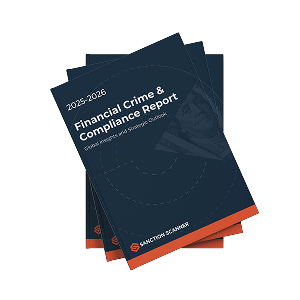Anti-Money Laundering (AML) compliance provides organizations with a structured framework to detect, stop, and report financial crimes, making it an essential safeguard in the global financial system. Following AML regulations is not only required by law, but it is also a basic duty for financial institutions to maintain institutional integrity and reduce risk exposure.
The Five Pillars of AML Compliance were developed to protect organizations against risks such as financial fraud, money laundering, and terrorist financing. They were initially created by the Bank Secrecy Act (BSA) and later refined by the Financial Crimes Enforcement Network (FinCEN).
The Five Pillars are; a written internal AML program; designation of a compliance officer; ongoing employee training; independent testing of the AML program and finally, customer due diligence and beneficial ownership identification.
1. A Written Internal AML Program (Internal Controls)
First up is the written AML program. In order to get ahead of illegal financial activity, this program creates policies, processes, and systems.
Key Components:
- Risk-based protocol is where determining and evaluating high-risk operations within your organisation. It pays particular attention to regions that are more vulnerable to financial crime is important. This component is crucial for you to prioritise vulnerabilities and strategically address them.
- During customer onboarding and verification, they guarantee comprehensive customer identity verification and the establishment of clear, systematic steps for KYC protocols. For this pillar element, you should include comprehensive documentation specifications, handle verification procedures, and implement continuous due diligence procedures.
- Escalation and transaction monitoring creates reliable procedures for transaction monitoring in real time, using red flags and predetermined thresholds to spot odd trends. Providing thorough instructions on how to escalate suspicious activity reports (SARs) to the right team makes sure that prompt investigation can be conducted and, if required, reports can be made to regulators.
- Utilising technological tools like transaction monitoring systems increase detection effectiveness is what's happening in this step. You should make sure to invest in tools that use machine learning and artificial intelligence to best find intricate patterns and irregularities in big datasets.
- Adapting your AML program's internal controls to the size, industry, and risk profile of your organisation is the best practice for this pillar. Using a one-size-fits-all strategy does not guarantee you a foolproof strategy in compliance.
![]()
2. Designation of a Compliance Officer (AML Officer)
Centralized accountability for the administration and execution of AML programs is ensured by the appointment of an AML compliance officer. This person serves as the liaison between internal stakeholders, regulatory bodies, and compliance systems.
Primary Responsibilities:
- Managing the AML program is where the officer is in charge of creating, putting into practice, and preserving the efficacy of the framework for AML compliance. For you to handle new risks or regulatory changes, policies and procedures are developed, followed, and updated on a regular basis.
- The second duty is the interaction with regulators which coordinates institutional responses to audits, questions, or requests for clarification, acts as the main point of contact for regulators. The officer oversees that all communications are precise, sent on time, and show your organization's dedication to following the law.
- Overseeing internal investigations is our third duty and it orders the careful examination of activities that have been flagged, making sure that each case is examined and suitably documented. Suspicious Activity Reports (SARs) are used by the officer to escalate possible threats, and they collaborate closely with law enforcement or legal teams for you to have a safe company.
- Maintaining compliance with regulations which the last principal duty of our list for you is important where the officer complies with the most recent industry standards, guidelines, and regulatory updates. Avoiding errors is what the officer does to makes sure that all compliance procedures and systems adapt to new requirements
In order for them to carry out their duties to help you efficiently, the compliance officer needs to have access to the resources they need with enough in-company authority.
3. Ongoing Employee Training
The compliance team alone is not responsible for AML compliance, we need all employees must be vigilant. Training programs give staff members the skills they need to recognize suspicious activity and take appropriate action.
Core Training Topics:
- Recognizing warning signs is crucial and is the first on the list of essential training subjects. Employees should receive thorough training on how to spot odd transaction patterns or activities that might indicate possible fraud or money laundering.
- Identifying questionable conduct is the second training subject to make sure quality demand is met. Assisting employees in honing their ability to recognize and precisely record customer behaviors that might point to increased risk is crucial for this subject. This could entail spotting behaviors like unwillingness to submit the necessary paperwork, unusual transactional urgency, or conduct that deviates from the usual characteristics of a customer.
- Appropriate escalation and documentation can be achieved through encouraging a culture of diligence by teaching staff members how to appropriately report suspicious activity. Where we stress how crucial it is to keep accurate, thorough records and to know when to contact regulatory bodies or compliance teams, is when the results are top-notch.
- Updates on regulations are the last subject on the list we compiled. Educating the staff on the latest developments in industry best practices and anti-money laundering (AML) regulations to make sure everything’s up-to-date is crucial. With giving importance to this subject, employee awareness of new requirements can be ensured through regular updates and training sessions.
- The best method is to use role-specific training that is updated at least once a year.
4. Independent Testing of the AML Program (Audit)
Without unbiased, regular evaluation, no compliance program can be deemed successful. Independent testing gives organizations a precise evaluation of the program's effectiveness and points out areas that need work.
Audit Considerations:
- SAR processes are to assess the timeliness and completeness of reporting suspicious activity to make sure all pertinent data is gathered and turned in by the deadline. Evaluating how well existing procedures detect and notify the proper authorities of suspicious activity makes sure the quality does not waver.
- By keeping up-to-date records, you can ensure that every document meets the legal requirements for precision, accuracy, and suitable retention periods. In order to ensure that AI algorithms utilized by transaction monitoring systems can reliably detect unusual or high-risk activity, transaction tracking systems are used to assess the precision, coverage, and calibration of these algorithms.
- Your institution's risk assessment will determine when independent testing should take place, but it should happen at least every 12 to 18 months.
5. Customer Due Diligence (CDD) and Beneficial Ownership Identification
Customer Due Diligence (CDD), which FinCEN introduced as the fifth pillar in 2016, is crucial for comprehending the characteristics of your clients, their risk profiles, and the beneficial ownership of legal entities.
Key Components:
- KYC is the most crucial. During onboarding, using thorough KYC processes to confirm and authenticate each person's identity is what we need to guarantee compliance with regulatory standards, which entails gathering documentation such as official identification documents, proof of address, and information cross-checked against reputable databases.
- Risk assessment is another important element that can be achieved by sorting clients into risk groups according to business type, transaction history, and geography. Use Enhanced Due Diligence (EDD) procedures for clients who pose a higher risk; these may include more thorough investigations, continuous observation, and more frequent reviews in order to reduce possible risks.
- Beneficial identification of ownership is the last element which entails determining and recording legal entities' Ultimate Beneficial Owners (UBOs) while maintaining accountability and transparency. This procedure strengthens compliance efforts and deters financial crime.
Why Are the Five Pillars of AML Compliance Important?
We hope that we were able to show that these pillars serve as the foundation for anti-money laundering initiatives, guaranteeing a methodical approach to compliance while lowering institutional risks and upholding regulatory confidence.
The principal benefits that we include on this list are limited but enough to give you an idea. The first is financial crime detection and prevention where sturdy frameworks offer early warnings against financial crimes such as money laundering. The second benefit we are underlining is reducing institutional and reputational risks, where robust compliance systems protect your company's reputation and financial stability. The penultimate benefit of our list is assuring audit readiness where adhering to the pillars correctly reduces the possibility of expensive fines, problems obtaining a license, or regulatory censure. Our last benefit that we serve as an example is improving global trust where institutions that adhere to international standards are better able to engender confidence among stakeholders everywhere.
These pillars are crucial frameworks that are being embraced by more and more international jurisdictions.
How Can Sanction Scanner Help You?
Meeting the bare minimum of requirements is not enough to maintain AML compliance in 2025. Compliance must be seen by institutions as a proactive function that is essential to their overall operational plan. To find out how we can assist in creating an AML compliance program that meets your company's needs, schedule a consultation right away.
FAQ's Blog Post
The five pillars are: a compliance program, a compliance officer, ongoing training, independent testing, and customer due diligence (CDD).
They form the foundation for detecting and preventing money laundering and ensure institutions meet legal requirements.
Financial institutions, fintech companies, MSBs, and other regulated entities are required to follow them.
They oversee the AML program, ensure regulatory compliance, and act as the primary point of contact with authorities.
It involves third-party or internal audits to evaluate the effectiveness of an AML program, required at least annually.
At least once a year, or more frequently in high-risk sectors or after regulatory changes.
CDD is the process of verifying customer identity and assessing their risk level to prevent illicit activities.
It may face hefty fines, regulatory sanctions, and reputational damage.

.webp)



